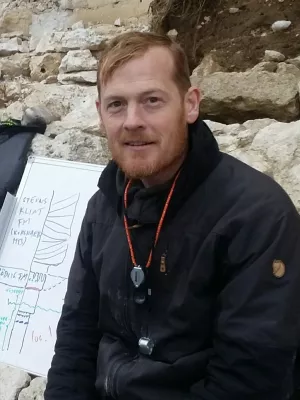
Mikael Calner
Professor

Redox geochemistry of the red ‘orthoceratite limestone’ of Baltoscandia : Possible linkage to mid-Ordovician palaeoceanographic changes
Author
Summary, in English
The orthoceratite limestone of the Ordovician epicontinental sea of Baltoscandia is one of the oldest Phanerozoic examples of pelagic marine red beds (MRBs). Being enriched in authigenic haematite, MRBs are considered to be sensitive palaeoceanographic redox indicators. In this paper, the origin of the reddening of the Ordovician MRBs and its timing and redox conditions were addressed at two sections, and in a drill core in the Kinnekulle area, Sweden, through the application of diffuse reflectance spectroscopy, sedimentary petrology (microfacies and electron microprobe), bulk-rock and in-situ element geochemistry (laser-ablation ICP-MS) and molybdenum stable isotope systematics. Enrichment in haematite (up to ~0.05 wt%) occurred during very early diagenesis under low sedimentation rates (~5 mm/kyr), which is comparable to several examples of Phanerozoic MRBs. The reddening was associated with the mm-scale, in-situ mobility of Fe, Mn, As, Mo and U, due to Fe–Mn redox cycling between primary and secondary minerals and pore water under oxic and suboxic to anoxic conditions; it was not related to significant changes in seawater chemistry. Stratigraphic red-to-grey transitions likely coincided with two mid-Darriwilian global regressions (the so-called Täljsten and at the base of the Gullhögen Formation), likely due to the effects of changing sedimentation rates and sub-bottom redox potentials. The Ordovician MRBs coincided with a positive δ13C excursion during the middle Darriwilian, which is different to MRB examples cited from the Devonian to the Cretaceous age, which frequently coincide with shifts to lower values of δ13C. Although MRBs are believed to show a time-specific occurrence in greenhouse or transitional greenhouse-to-icehouse climatic modes by several authors, our study suggests that causal links between MRBs and global carbon cycle remain unclear.
Department/s
- Lithosphere and Biosphere Science
Publishing year
2021
Language
English
Publication/Series
Sedimentary Geology
Volume
420
Document type
Journal article
Publisher
Elsevier
Topic
- Geology
Keywords
- Carbon isotope geochemistry
- Early diagenesis
- Laser ablation ICP-MS
- Marine red beds
- Redox gradients
- Sea-level changes
Status
Published
ISBN/ISSN/Other
- ISSN: 0037-0738

